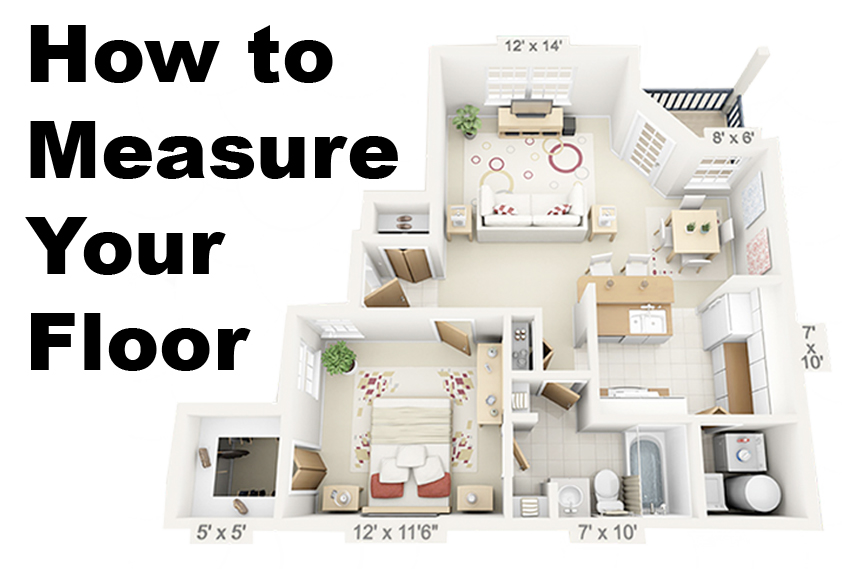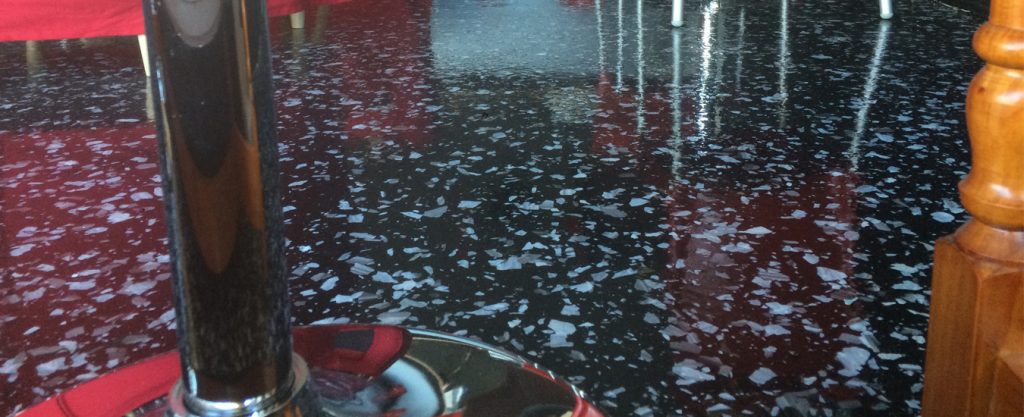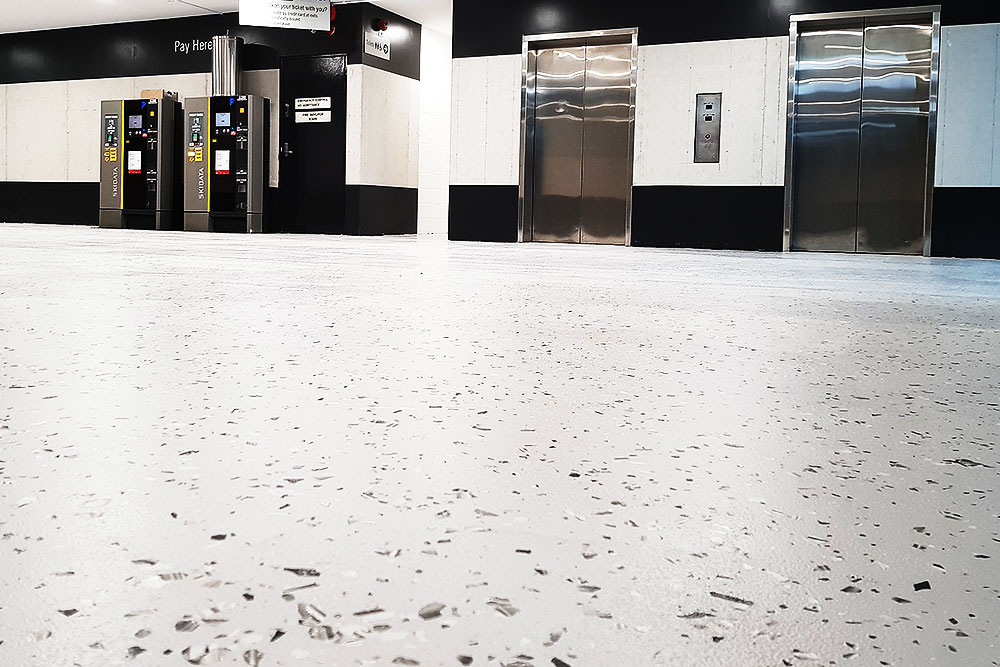How to Measure Your Floor For a Concrete Floor Coating Quote
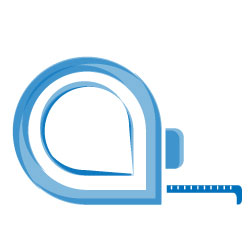
How to measure a floor sounds like a silly question, and many people might be embarrassed to ask, but the truth of the matter is, it’s not as much of a ‘common knowledge’ as people might think. Some people might even think they know what to do, but can get a little confused when it comes to actually carrying out the task. Thankfully, the answer is relatively simple.
In order to speed up your quoting process, it’s always best to give as much information as possible in your first conversation, and the size of your floor is the best place to start. For more information on speeding up the quoting process, see our article on ‘9 Things you must know before coating your concrete floor‘
What you will need before you start:
- Paper & Pen
- Tape Measure
1. Start by drawing the outline of the floor space
Draw a rough mud-map that shows all the corners and angles of the room. Don’t worry if it’s not completely accurate, rough is perfectly fine.
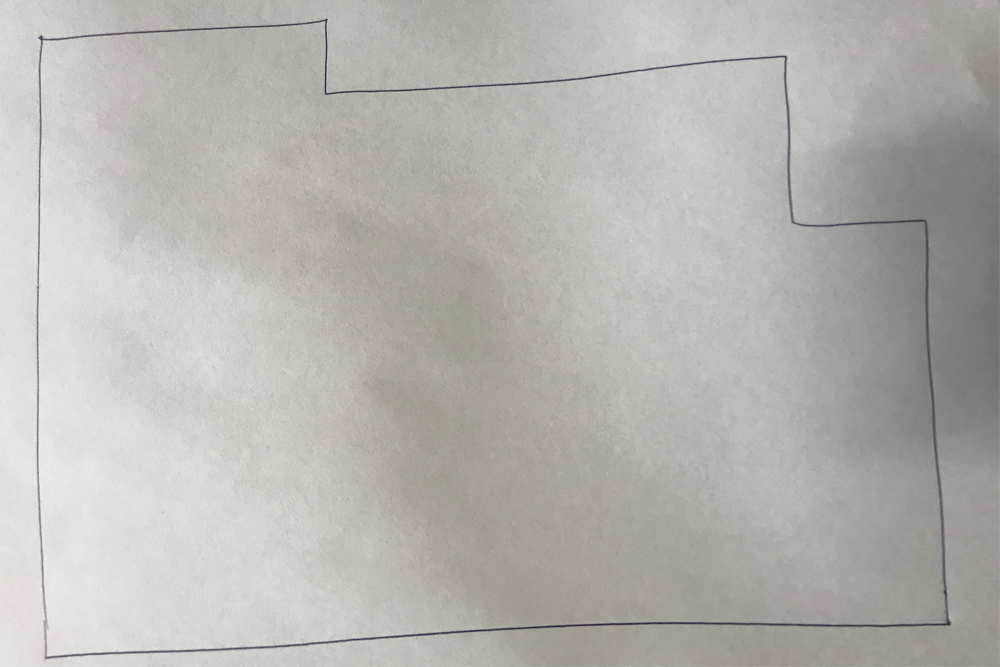
2. Map out any immovable objects
Next, draw any immovable objects on your map, such as countertops, serveries, small islands or any furniture that is bolted to the floor. Your new epoxy floor coating will be installed around these objects, so the end measurement will exclude these spaces.
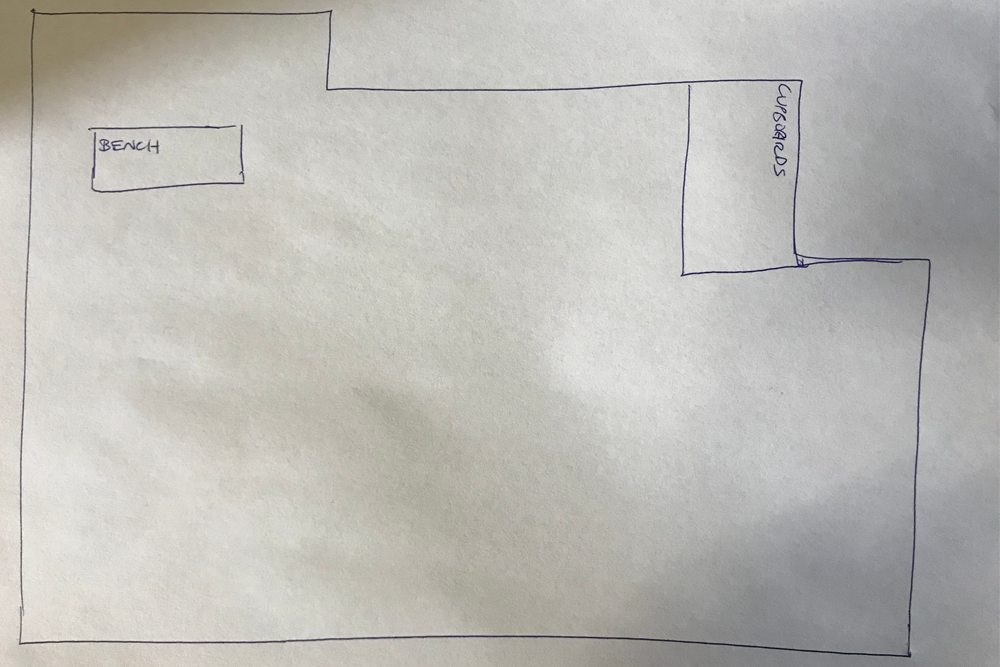
3. Divide the Floor into as Many Neat Squares as Possible
When a room is not perfectly square, the mathematics for measurements can be much more complicated. To make your life easy, draw lines across your map to segregate the floor into as squares or rectangles.

3. Measure Each Straight Line On Your Map
Walk around the room and measure every single straight line you’ve mapped out, including the immovable objects you’ve noted. You’re best to do this with a tape measure, but if you don’t have one on hand, ‘stepping it out’ by taking large steps which are roughly a metre each as a rough measurement is still better than nothing at all.
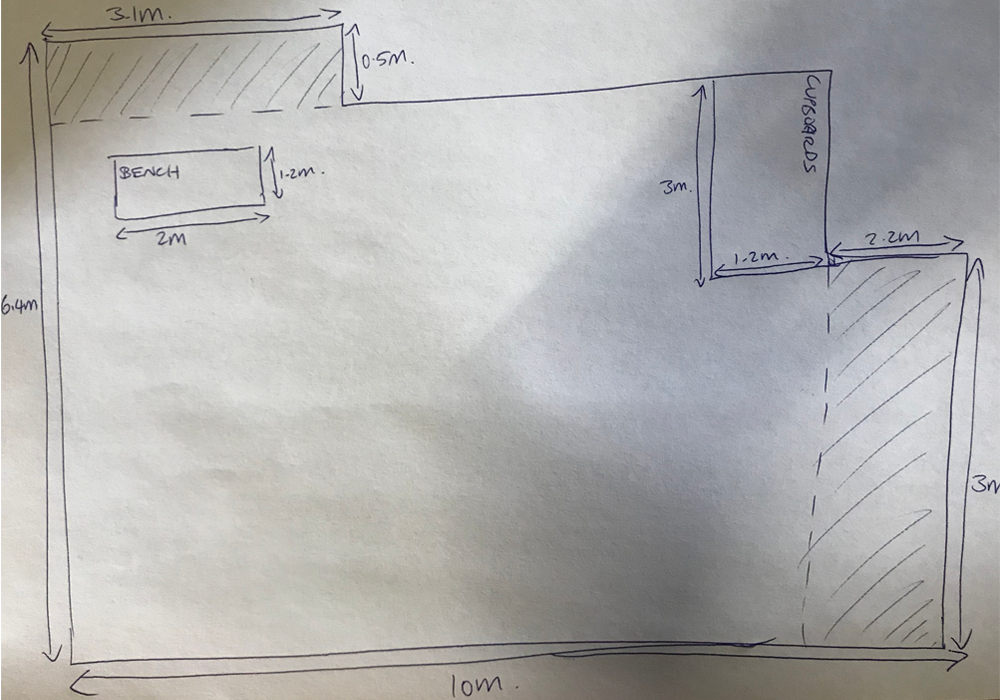
5. Narrow Down the Length and Width of Each Square
Use your measurements of each straight lines to define the length and width of each square or rectangle you’ve identified. In the example picture, two of the straight lines’ measurements needed to be adjusted in order to exclude the smaller spaces on the edges.
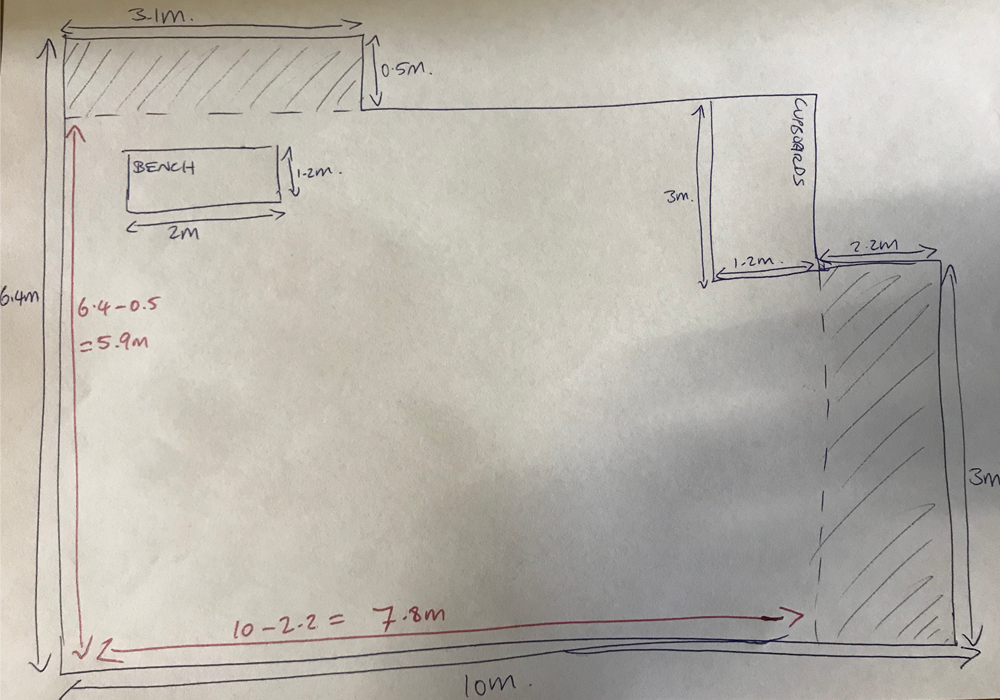
6. Use Your Measurements to Calculate the Area of the Squares
Area of a square/rectangle is calculated by multiplying the length by the width. Use your own measurements to calculate the area of each square on your map.
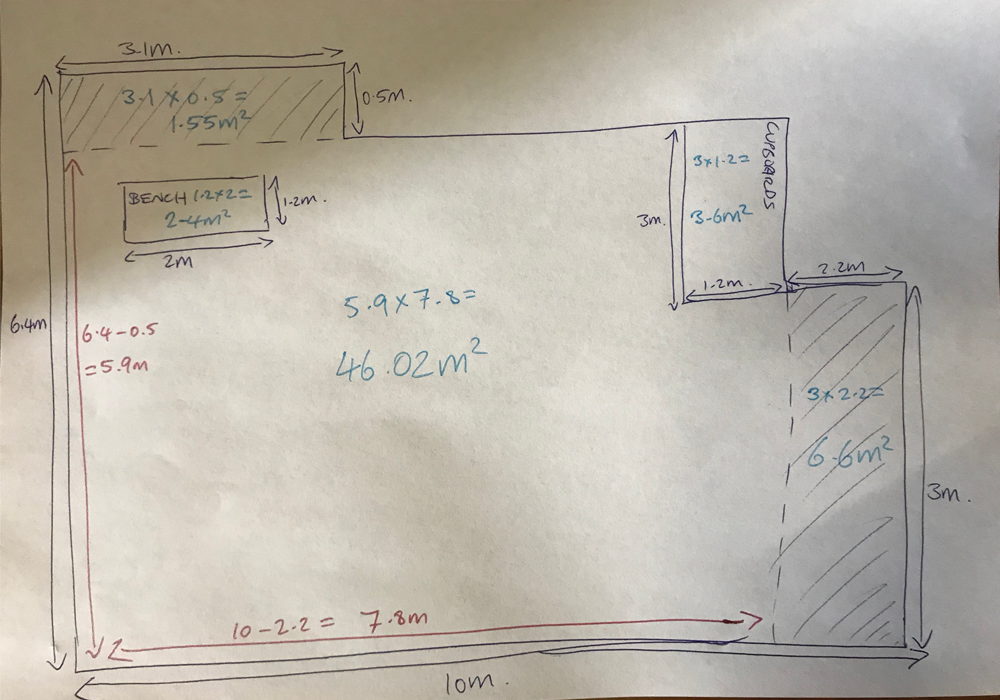
7. Add Together All Positive Spaces and Minus Negative Spaces
Mark out all of your immovable spaces as negative spaces and all other squares as positive spaces. Add together all positive spaces and then minus the negative spaces according to your measurements. The final result is the overall measurement in m2 for your epoxy floor coating.

Give this figure along with your request for a quote. Sending your mud map to sales@hawkcfc.com.au can be helpful also; the more information the better!

